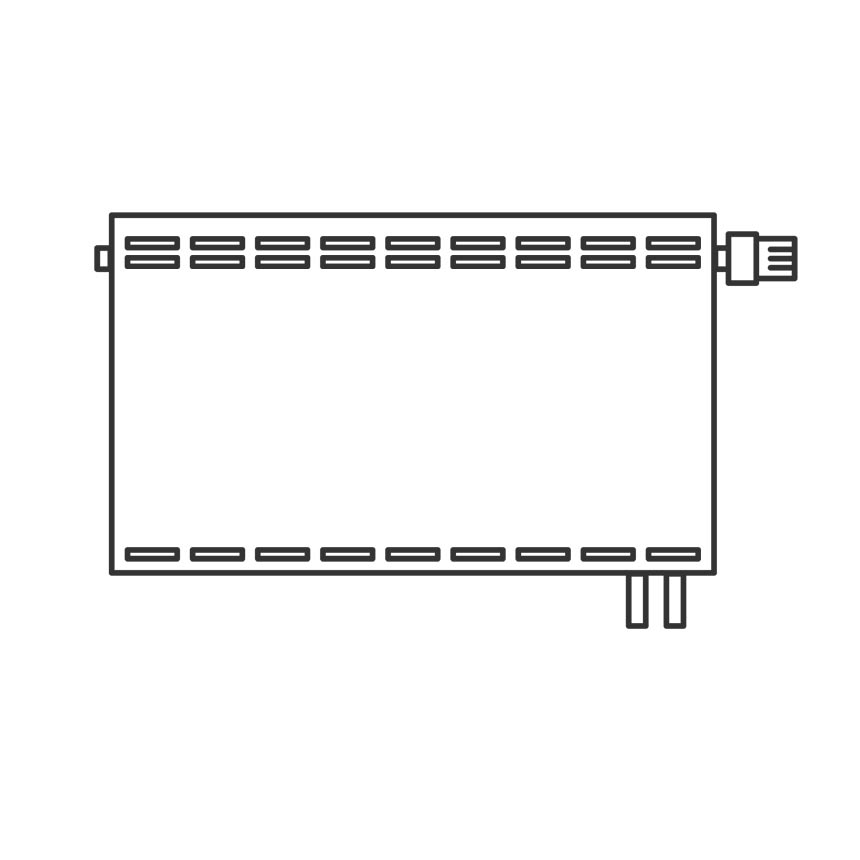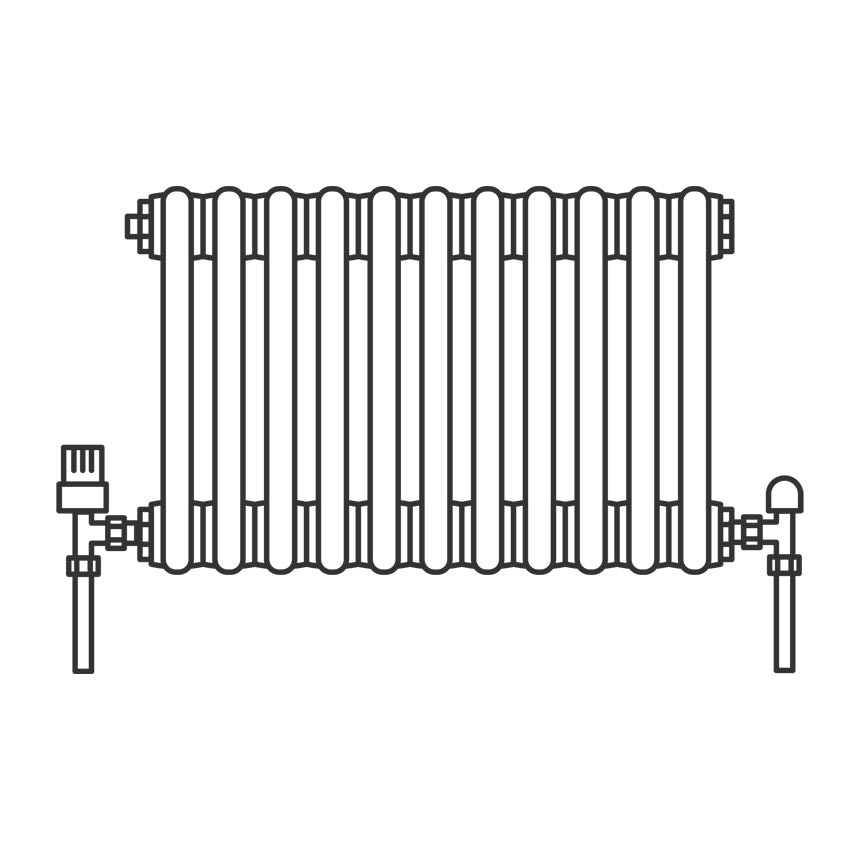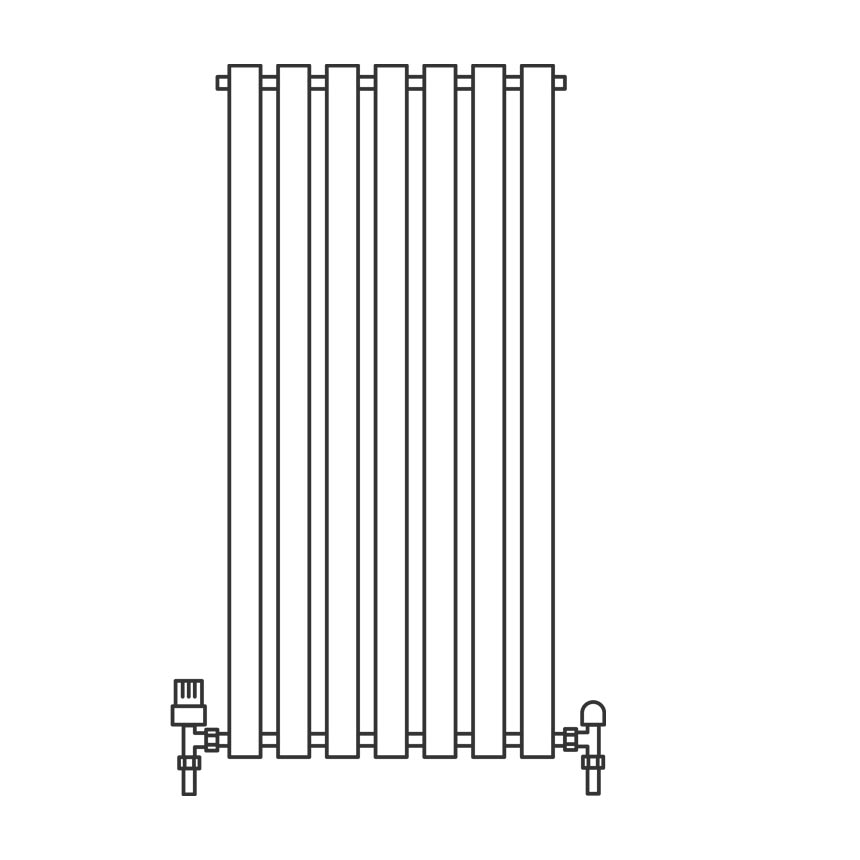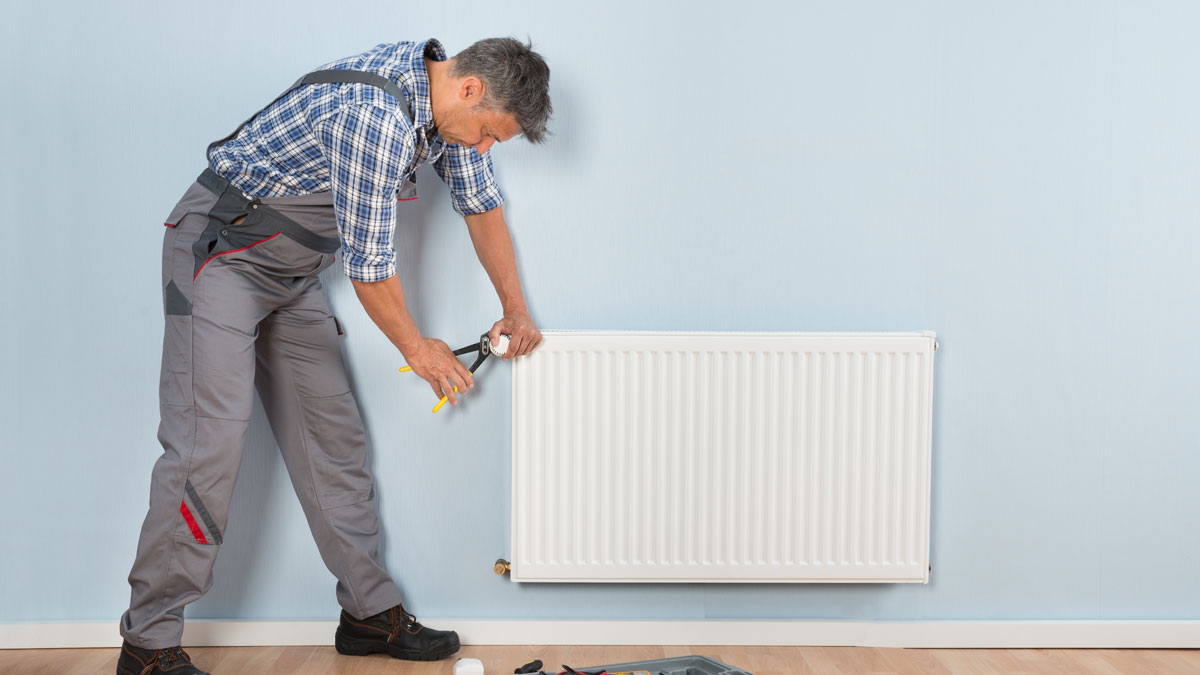Radiators are an essential part of many heating systems, providing warmth and comfort to homes and buildings throughout the UK. However, with so many different types of radiators available on the market, it can be challenging to know which one is right for your space. From classic cast iron radiators to sleek, modern designs, each type of radiator has its own unique benefits and drawbacks. Understanding the different types of radiators available can help you choose the best option for your home or building, whether you’re looking for something stylish, energy-efficient, or cost-effective. In this guide, we will explore some of the most common types of radiators in the UK, along with their features, benefits, and considerations, to help you make an informed decision on the best radiator for your heating needs.
The Most Common Types of Radiators in UK
There are several common types of radiators that are used in the UK. Here are some of the most popular types:
- Conventional Panel Radiators: These are the most common type of radiator in the UK. They are made of steel panels that are connected to each other and come in a variety of sizes and shapes. They are cost-effective and easy to install.

- Column Radiators: These radiators have a classic and traditional look, with a series of vertical columns that heat up. They are often used in period homes or to create a vintage aesthetic.

- Towel Radiators: These are designed to heat towels and keep your bathroom warm and dry. They are often installed in bathrooms and come in a variety of sizes and styles.
- Designer Radiators: These radiators are designed to be a feature in your home, with modern and stylish designs that can enhance the look of your living space.

- Low Surface Temperature Radiators: These radiators are designed to be safe to touch and are often used in environments where there are vulnerable people, such as hospitals or care homes.
Each type of radiator has its own unique features and benefits, so it is important to choose the right type of radiator for your needs and preferences.
Steam Vs. Hot-Water Radiators Comparison
Steam radiators and hot water radiators are two types of heating systems that are commonly used in homes and buildings. Here are some differences between the two:
Operation: Steam radiators use steam to heat up the air in a room, while hot water radiators use hot water to heat up the air.
Temperature: Steam radiators operate at a higher temperature than hot water radiators, which means that they can heat up a room faster. However, hot water radiators can maintain a more consistent temperature, which can be more comfortable for some people.
Maintenance: Steam radiators require more maintenance than hot water radiators, as they need to be periodically drained and cleaned to prevent build-up of sediment and mineral deposits. Hot water radiators do not require as much maintenance but may need occasional bleeding to remove air from the system.
Efficiency: Hot water radiators are generally considered to be more efficient than steam radiators, as they require less energy to heat up the water to the required temperature.
Noise: Steam radiators can make more noise than hot water radiators, as the steam can create a hissing or banging sound as it travels through the system.
Installation: Steam systems are more complex to install than hot water systems, as they require more specialized equipment and piping.
Heating speed: Steam systems can heat up a room more quickly than hot water systems, as steam can be distributed more rapidly.
Radiator size: Steam radiators tend to be larger than hot water radiators, as they need to accommodate the expansion of the steam.
Cost: Hot water radiators are generally less expensive than steam radiators, as they require less complex equipment and piping. However, installation costs can vary depending on the complexity of the installation and the location of the radiator.
Material: Both steam and hot water radiators can be made from a variety of materials, including:
- Cast iron: Cast iron radiators are a popular choice for both steam and hot water systems due to their durability, heat retention, and classic look.
- Steel: Steel radiators are a more modern option, with a sleek and minimalist design. They are often less expensive than cast iron radiators.
- Aluminium: Aluminium radiators are lightweight, energy-efficient, and quick to heat up. They are often used in modern or minimalist settings.
- Copper: Copper radiators are a relatively uncommon option, but they offer excellent heat retention and can be an attractive addition to a room.
- Brass: Brass radiators are a luxurious choice, with a shiny, reflective surface that can add a touch of elegance to a space.
Making the Best Choices for Your Home Heating
To make the best choice for your home in the UK when it comes to radiators, consider the following tips:
- Do your research: Look at the different types of radiators available and their features to determine which one will meet your heating needs.
- Measure your space: Measure the size of the room where you want to install the radiator to ensure that you choose one that is appropriately sized for the space.
- Consider energy efficiency: Look for radiators that have a high energy efficiency rating to reduce your energy bills and carbon footprint.
- Think about style: Consider the design style of your home and the aesthetic you want to achieve when choosing a radiator. Consider the materials, colours, and shapes of different radiator options and choose the one that best complements your home’s design.
- Set a budget: Determine your budget for your radiator installation and choose a radiator that fits within that budget while still meeting your heating needs and design preferences.
- Evaluate installation requirements: Consider the complexity of the installation process and determine whether you have the skills and tools required to install the radiator yourself, or if you need to hire a professional plumber.
By following these tips, you can choose the best type of radiator for your home in the UK that meets your heating needs, design preferences, energy efficiency goals, and budget. It’s important to invest in a high-quality radiator that will provide reliable, long-lasting heating to your home.
Conclusion
In conclusion, selecting the right type of radiator for your home in the UK involves considering factors such as size, energy efficiency, style, budget, and installation requirements. By taking the time to do your research and evaluate your options, you can choose a radiator that meets your heating needs while also complementing your home’s design.
However, radiator installation can be a complex and challenging process, especially if you do not have the necessary plumbing skills and tools. It is important to prioritize safety and ensure that your radiator is installed correctly to avoid any potential issues such as leaks or damage to your heating system. As such, it is highly recommended that you hire a professional plumber to install your radiator. A qualified plumber can ensure that your radiator is installed safely and correctly, minimizing the risk of any issues in the future. By following these tips and hiring a pro plumber, you can enjoy a warm and cozy home without any worries about the functionality or safety of your radiator.
How useful was this post?
Click on a star to rate it!
Average rating / 5. Vote count:
No votes so far! Be the first to rate this post.











